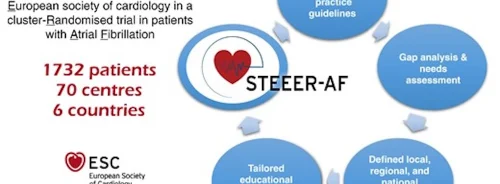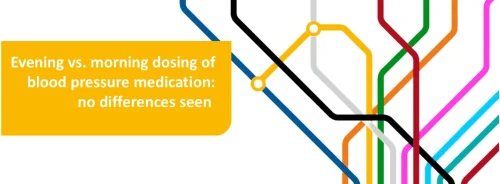Alzheimer's disease (AD) is a progressive neurodegenerative disorder characterised by the accumulation of amyloid plaques and neurofibrillary tangles in the brain. These pathological changes begin decades before the appearance of clinical symptoms, making early detection critical for potential intervention. Amyloid PET imaging has emerged as a valuable tool for visualising and quantifying amyloid plaque accumulation in the brain, providing insights into the disease's early stages. However, conventional amyloid PET measures, such as the standardised uptake value ratio (SUVR), have limitations, including variability in imaging parameters and the lack of cross-tracer comparability. A recent article in Radiology Advances explores the application of a deep learning-based model for harmonising amyloid PET images from different tracers to improve the prediction of cognitive decline in non-demented elderly individuals.
Amyloid PET Imaging and Its Limitations
Amyloid PET imaging is a non-invasive technique that allows for the in vivo visualization of amyloid plaques, one of the hallmarks of AD. The accumulation of these plaques is considered a precursor to cognitive decline and eventual dementia. Traditional methods of analysing amyloid PET images rely on SUVR, a quantitative measure that compares amyloid uptake in the brain relative to a reference region. While SUVR has been widely used in both research and clinical settings, it is subject to several limitations. These include variations in reference region selection, differences in imaging parameters, and the inherent variability across different PET tracers.
To address these challenges, the centiloid scale was introduced as a standardised method to harmonise SUVR values across different tracers. However, the centiloid approach also has its drawbacks, including the need for calibration with multiple tracers and susceptibility to variability in SUVR. As a result, there is a pressing need and a growing interest in developing alternative methods to improve the reliability and comparability of amyloid PET measurements, particularly for multicentre and longitudinal studies. This research is crucial for advancing our understanding and management of neurodegenerative disorders.
Deep Learning-Based Harmonisation of Amyloid PET
Recent advancements in deep learning have opened new possibilities for improving amyloid PET analysis. A deep learning model was developed to harmonise amyloid PET images across different tracers, aiming to enhance the prediction of cognitive decline. This model, referred to as DL-ADprob, was trained using a large dataset of amyloid PET images from multiple cohorts, including the Alzheimer’s Disease Neuroimaging Initiative (ADNI), the Australian Imaging Biomarkers and Lifestyle (AIBL) study, and the Japanese Alzheimer’s Disease Neuroimaging Initiative (J-ADNI).
The deep learning model was designed to identify AD-related patterns of amyloid plaque accumulation, independent of the specific tracer used. By doing so, it provides a continuous probability score of AD-dementia, which can be used to predict the likelihood of cognitive decline in cognitively unimpaired (CU) and mild cognitive impairment (MCI) individuals. The DL-ADprob model demonstrated excellent performance in distinguishing between CU and AD-dementia individuals, outperforming traditional SUVR and centiloid measures in several key metrics, including accuracy, sensitivity, and specificity.
Prognostic Value of DL-ADprob in Cognitive Decline
The primary goal of developing the DL-ADprob model was to improve the prediction of cognitive decline in non-demented elderly individuals. To assess its prognostic value, the model was applied to amyloid PET images from two independent cohorts: the ADNI-MCI group and the Harvard Aging Brain Study (HABS)-CU group. The results were promising, with the DL-ADprob score providing significant incremental prognostic value over conventional amyloid PET measures, MRI-derived hippocampal volumes, and clinical information.
In the ADNI-MCI group, DL-ADprob was a robust independent predictor of progression from MCI to AD-dementia. Similarly, in the HABS-CU group, the model demonstrated the ability to predict conversion from CU to MCI. DL-ADprob also showed prognostic value in predicting future amyloid-positive conversion in amyloid-negative individuals, highlighting its potential utility in early-stage disease management.
Conclusion
The integration of deep learning into amyloid PET analysis represents a significant advancement in neuroimaging and Alzheimer's disease research. The DL-ADprob model not only improves the harmonisation of amyloid PET images across different tracers but also enhances the prediction of cognitive decline in non-demented elderly individuals. By providing a robust, tracer-independent biomarker, DL-ADprob has the potential to complement conventional amyloid PET measures, offering a more individualised approach to prognosis and early intervention in Alzheimer’s disease.
The success of the DL-ADprob model underscores the importance of continued research into deep-learning applications in medical imaging. Future studies should focus on refining the model, particularly in diverse populations and across different imaging modalities. As the field progresses, deep learning-based tools like DL-ADprob could play a crucial role in the early detection and management of Alzheimer’s disease, ultimately improving patient outcomes through personalised medicine approaches.
Source: Radiology Advances
Image Credit: iStock






